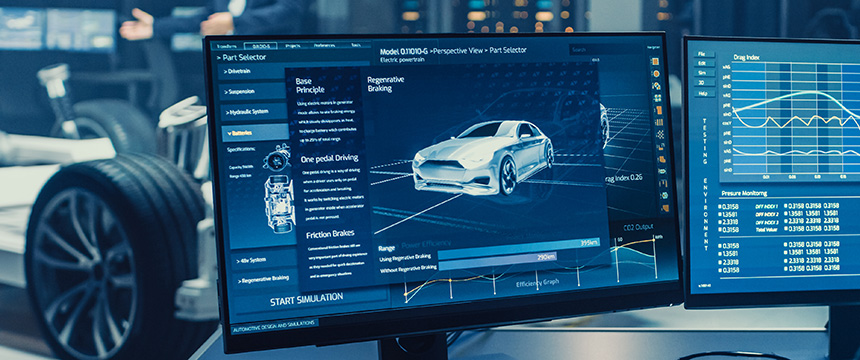Key Intellectual Property Considerations for Joint or Outside Development Projects

Recent years have witnessed accelerated advancements in, and commercialization of, electric vehicle, autonomous vehicle, connected vehicle, and other vehicle and mobility technologies. Similarly, the expertise and resources required to design, develop, and manufacture vehicles has never been more diverse. Such diversity is not exclusive to the automotive industry, but is shared with manufacturers in the construction, agriculture, transportation, recreational, and motorcycle industries. The OEMs, and even suppliers, increasingly rely on outside engineering firms, specialized technology suppliers, and other companies not traditionally suppliers to the industry to design and integrate new technologies to current and next generation products.
This increased reliance on contractors requires diligent implementation of proper agreements that ensures access to the developed technology. Such access will depend on the parties involved and typically will be either ownership of or a license to the developed technology.
Product development activity often results in creation or incorporation of various types of intellectual property (e.g., patents, copyrights, trade secrets, know-how, and other confidential or proprietary information). The owner of developed intellectual property often will depend on who created the technology, the terms in agreements between the parties, and the type of intellectual property. When a contractor creates the intellectual property, the risks increase and become more varied. One of the important considerations for companies retaining (and paying) contractors to develop the product or technology is that the contractor may be the owner of the intellectual property unless there is a proper written agreement.
Sometimes, companies wrongly believe that paying for development work, signing a confidentiality agreement, or incorporating standard commercial terms and conditions will provide the access to the developed technology and avoid intellectual property issues. Instead, it is important to negotiate and execute an agreement with dedicated terms covering the project work and intellectual property. Types of agreements used to cover development work have various titles, such as Joint Development Agreements (JDA), Professional/Engineering/Design Services Agreements, Contractor/Consultant Agreements, or Research Agreements. The key issues to be addressed by the agreement covering the development work include:
- Who owns newly created IP?
- What are the other party’s rights in the newly created IP?
- Who owns later improvements to newly created IP?
- Do we have the necessary license to use background IP or third party IP? Until when?
- Who owns improvements to background IP?
- Who will be liable for IP infringement by use of newly created IP or use of background IP?
- Are both sides clear on the project scope, responsibilities, timeline, and costs/payments?
- Do one or both parties have the ability to terminate the agreement/project?
Additional considerations that may be addressed by the agreement include:
- Restrictions on use of developed IP (field, territory, timing, product lines, etc.).
- Exclusivity or non-compete terms that limits the contractor from working with competitors or other third parties.
- Remedies for design defects.
- Terms requiring assistance and cooperation for any product recalls.
- Framework for a future license agreement or a future supply arrangement.
- Payment(s) for a license grant (e.g., royalty rate).
- Enforcement of licensed or jointly owned IP rights.
Development of electric vehicle, autonomous vehicle, connected vehicle, and other mobility technologies often include software development. Additional considerations for software development by the contractor include:
- Who owns software programs created by a contractor?
- Does the agreement properly transfer ownership created by the contractor?
- Who has access to source code, and under what conditions?
- Who has the ability (and/or is required to) perform software updates and maintenance?
- Can (or how can) open source software be used?
Project leads and contractors will not want to be delayed by the negotiation and signing of the agreement, but it is a worthy investment that may avoid substantial issues later.
